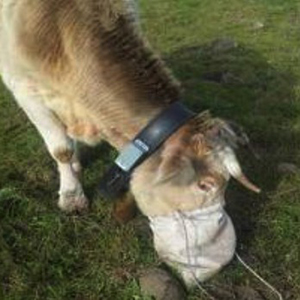Kernel density estimation analyses based on a low power-global positioning system for monitoring environmental issues of grazing cattle

Published: 25 March 2022
Abstract Views: 1117
PDF: 540
HTML: 69
HTML: 69
Publisher's note
All claims expressed in this article are solely those of the authors and do not necessarily represent those of their affiliated organizations, or those of the publisher, the editors and the reviewers. Any product that may be evaluated in this article or claim that may be made by its manufacturer is not guaranteed or endorsed by the publisher.
All claims expressed in this article are solely those of the authors and do not necessarily represent those of their affiliated organizations, or those of the publisher, the editors and the reviewers. Any product that may be evaluated in this article or claim that may be made by its manufacturer is not guaranteed or endorsed by the publisher.
Similar Articles
- Tommaso Baggio, Francesco Bettella, Lucia Bortolini, Vincenzo d'Agostino, Hydrologic performance assessment of nature-based solutions: a case study in North-eastern Italy , Journal of Agricultural Engineering: Vol. 54 No. 2 (2023)
- Rodolfo Piscopia, Andrea Petroselli, Salvatore Grimaldi, A software package for predicting design-flood hydrographs in small and ungauged basins , Journal of Agricultural Engineering: Vol. 46 No. 2 (2015)
- Francesca Piazzolla, Maria Luisa Amodio, Giancarlo Colelli, Spectra evolution over on-vine holding of Italia table grapes: prediction of maturity and discrimination for harvest times using a Vis-NIR hyperspectral device , Journal of Agricultural Engineering: Vol. 48 No. 2 (2017)
- Stefania Pindozzi, Elena Cervelli, Pier Francesco Recchi, Alessandra Capolupo, Lorenzo Boccia, Predicting land use change on a broad area: Dyna-CLUE model application to the Litorale Domizio-Agro Aversano (Campania, South Italy) , Journal of Agricultural Engineering: Vol. 48 No. s1 (2017): Special Issue
- Andrea Petroselli, Dario Romerio, Piero Santelli, Roberto Mariotti, Silvano Di Giacinti, Luca Casini, Carmine Testa, Assessing sprinkler systems performance with a novel experimental benchmark , Journal of Agricultural Engineering: Vol. 52 No. 3 (2021)
- Alessandro Toccolini, Simone Felisari, Paolo Stefano Ferrario, Design of green spaces located below the urbanised level. Themes, problems and solutions applied to a case study , Journal of Agricultural Engineering: Vol. 46 No. 4 (2015)
- Andrea Galli, Cosimo Peruzzi, Fabiola Gangi, Daniele Masseroni, ArduHydro: a low-cost device for water level measurement and monitoring , Journal of Agricultural Engineering: Vol. 55 No. 1 (2024)
- Monica C. M. Parlato, Carlos Rivera-Gómez, Simona M. C. Porto, Reuse of livestock waste for the reinforcement of rammed-earth materials: investigation on mechanical performances , Journal of Agricultural Engineering: Vol. 54 No. 2 (2023)
- Michela Zanetti, Benoît Brandelet, Diletta Marini, Andrea Sgarbossa, Chiara Giorio, Denis Badocco, Andrea Tapparo, Stefano Grigolato, Caroline Rogaume, Yann Rogaume, Raffaele Cavalli, Vineyard pruning residues pellets for use in domestic appliances: a quality assessment according to the EN ISO 17225 , Journal of Agricultural Engineering: Vol. 48 No. 2 (2017)
- Caiqi Liao, Jin Chen, Fanzhao Geng, Xueming Tang, Airflow basin structure numerical optimisation analysis and suction nozzle characteristics experimental study of vacuum-vibration tray precision seeder , Journal of Agricultural Engineering: Vol. 53 No. 4 (2022)
<< < 13 14 15 16 17 18 19 20 21 22 > >>
You may also start an advanced similarity search for this article.

 https://doi.org/10.4081/jae.2021.1323
https://doi.org/10.4081/jae.2021.1323







